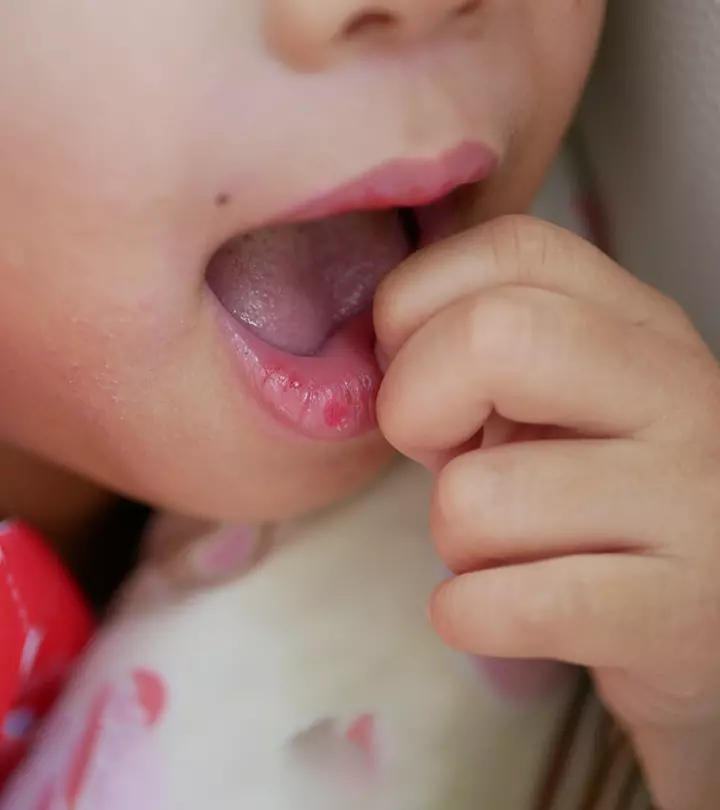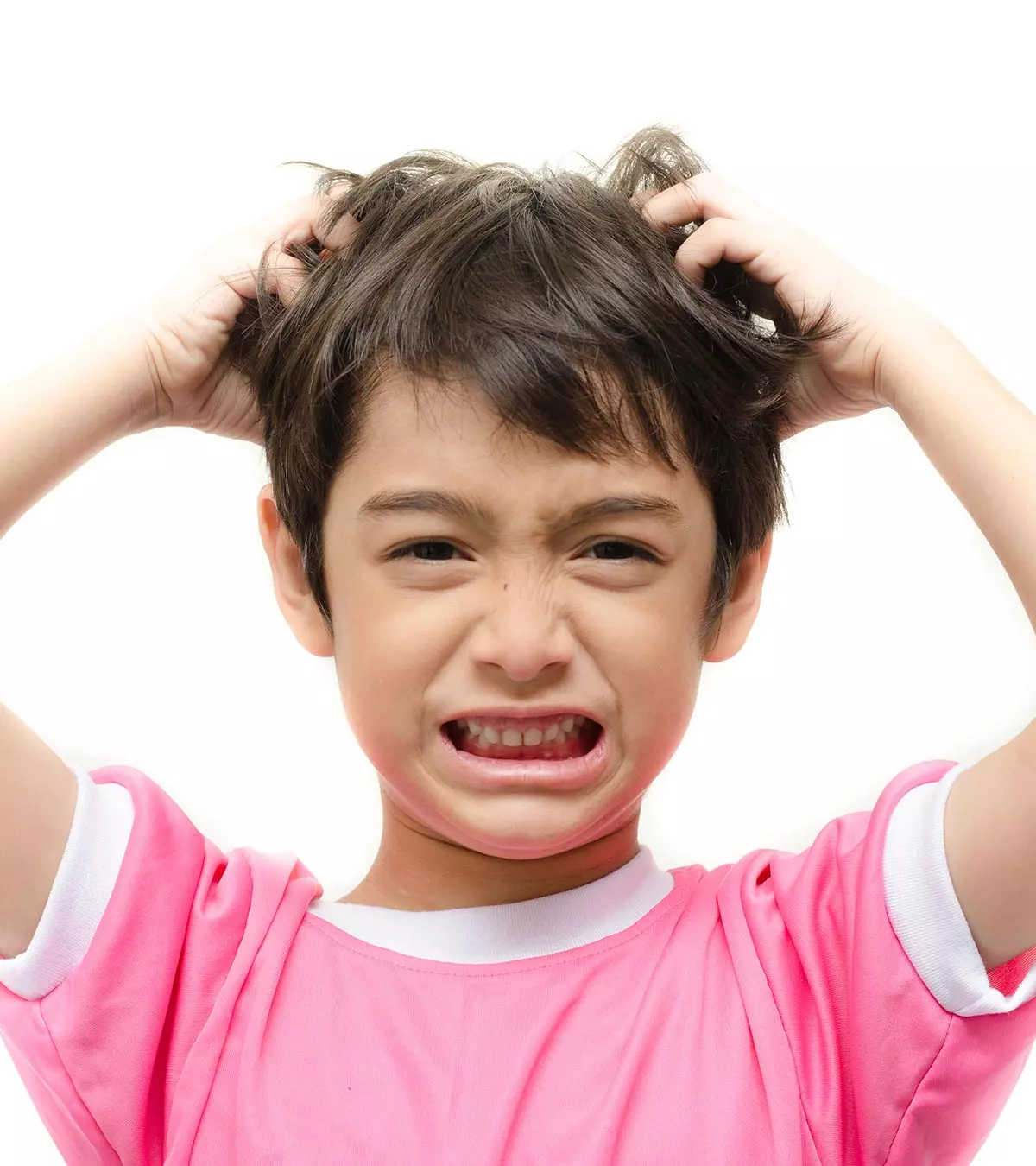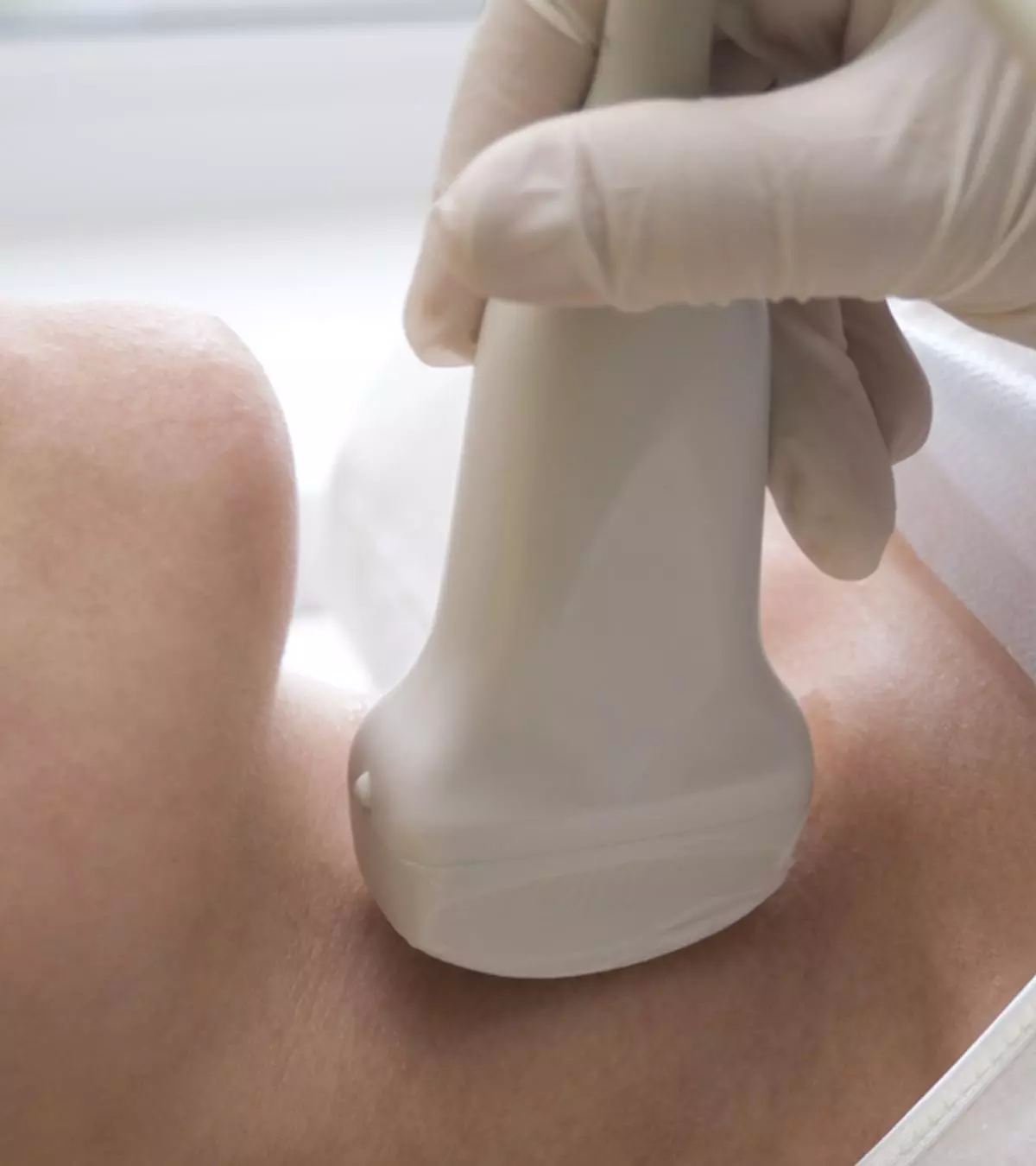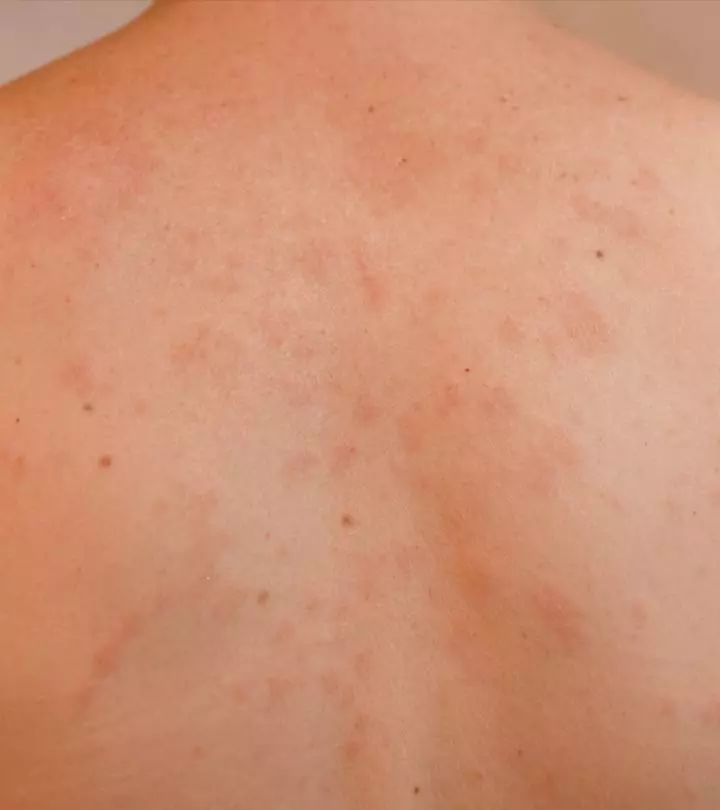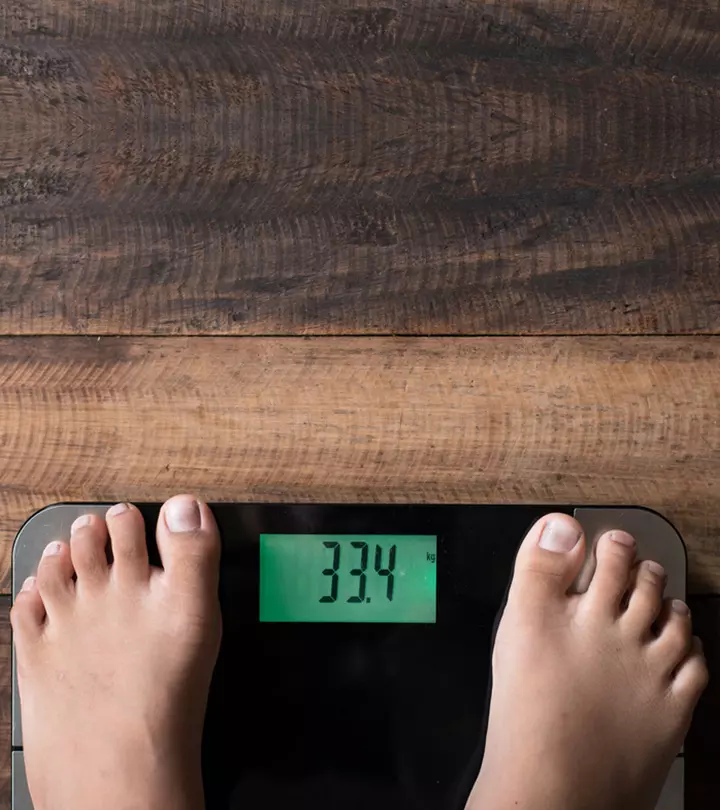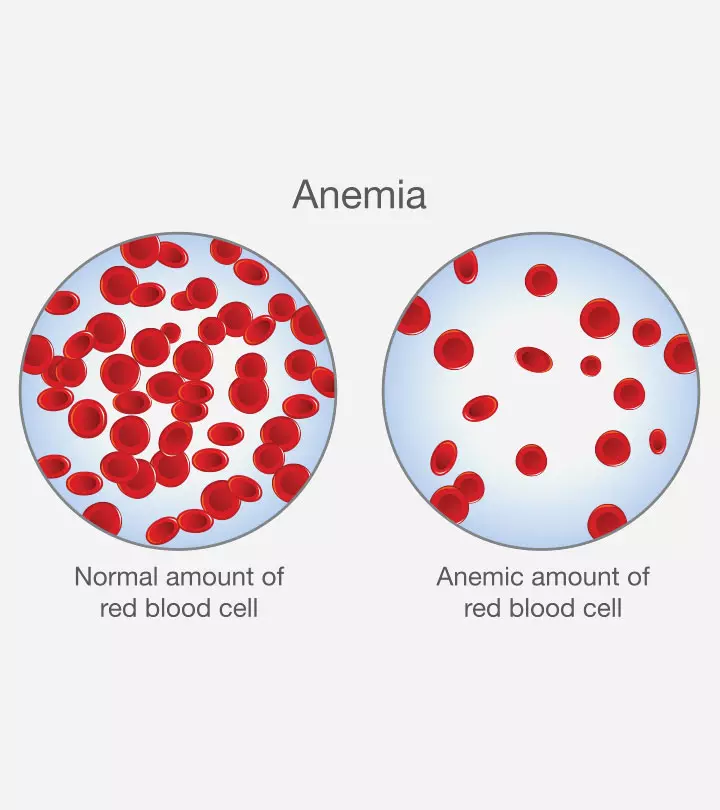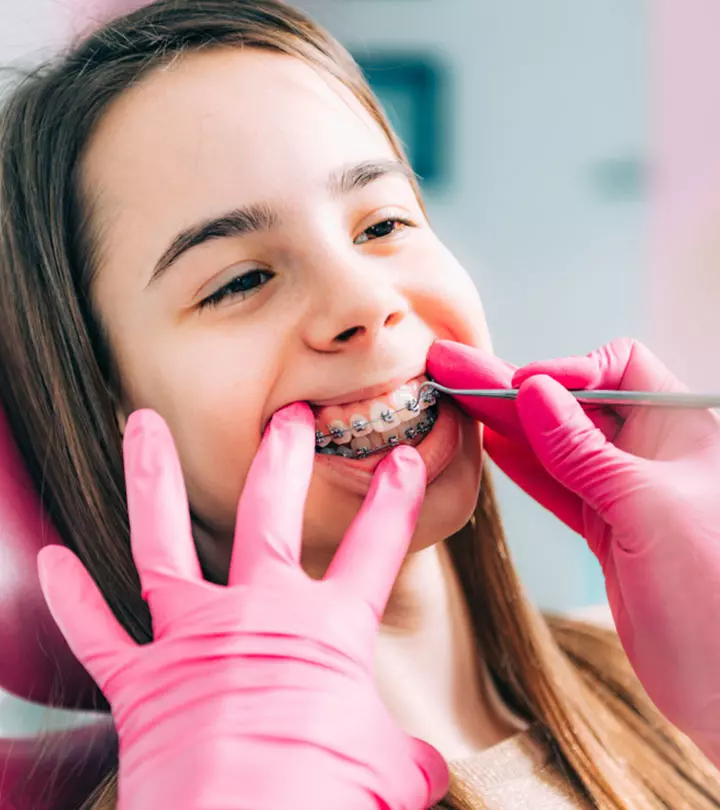
Image: Shutterstock
Around one-third of all children need orthodontic treatment (1). The braces for kids are used to align crooked, crowded, or protruding teeth, close abnormal gaps between the teeth, and bite correction for the upper and the lower teeth to contact each other when closing the mouth (2).
Read more about the types, indications, benefits, and tips on maintaining oral hygiene when using dental braces for kids.
Key Pointers
- Braces are used to keep teeth in position firmly and are available in several types.
- A child could need braces for various reasons, including eating or biting difficulties, protruding, missing teeth, etc.
- The American Dental Association suggests that a child might have braces beyond eight years.
- You may use an appropriate toothbrush for braces, limit sugar and starch intake, encourage flossing and ensure routine dental checkups for your child.
What Are The Types Of Braces For Kids?
The following are the most popular dental braces for kids (3) (4).
1. Metal braces

Image: Shutterstock
- The most common option for children
- Small metal appliances are fixed to each tooth, while a metal wire passes through these brackets and joins them together.
- A wire is secured on the brackets with elastic bands.
- The desired tooth movement is achieved by tightening the wire wherever necessary at regular intervals.
- Various color elastic options are available.
- Advanced options, such as self ligating metal braces are available, which do not require elastics, provide constant force over a longer duration, reduce discomfort and the frequency of orthodontic care appointments.
 Point to remember
Point to remember2. Ceramic braces
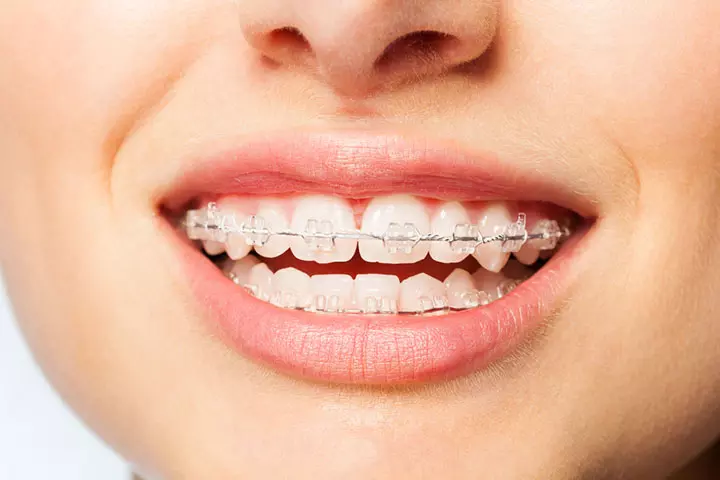
Image: Shutterstock
- Serve the same function as metal braces.
- The treatment’s outcome and time duration are the same for metal and ceramic braces.
- Made from a clear or a tooth-colored material to blend with the tooth color.
- The wire that passes through the brackets is made from metal, which can also be coated with a tooth-colored material.
- Clear braces are preferred by older children who are more conscious about their appearance.
- Advanced options, such as self ligating ceramic braces are available which do not require elastics, provide constant force over a longer duration, reduce discomfort and reduce the frequency of orthodontic care appointments.
3. Lingual braces
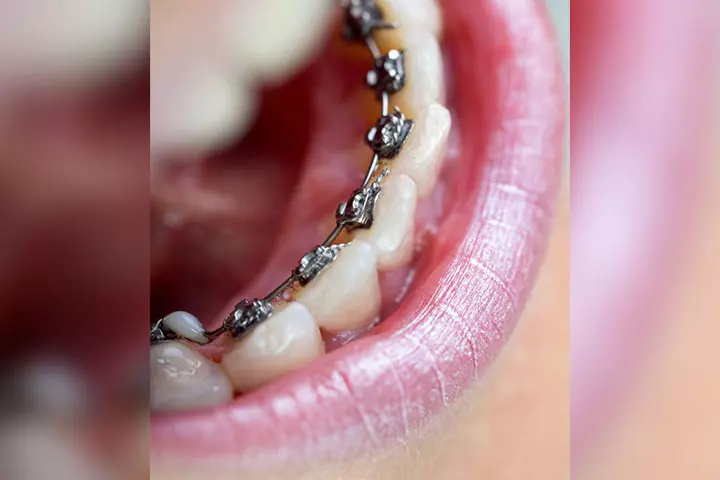
Image: Shutterstock
- Metal braces and wires are used but placed on the inner side of the teeth, i.e., on the side of the tongue/palate.
- Esthetic way of correcting misaligned teeth as their position makes it difficult to spot them.
- Elder children or young adults concerned about their appearance usually select these lingual braces.
- Due to difficulty in maintaining oral hygiene with braces, this option is beneficial as the staining on teeth is not visible on the outer surface.
- Treatment takes longer than with the braces attached to the front surface of teeth.
- Not suitable for younger children with smaller teeth.
- Can affect speech during the treatment period.
4. Clear Aligners
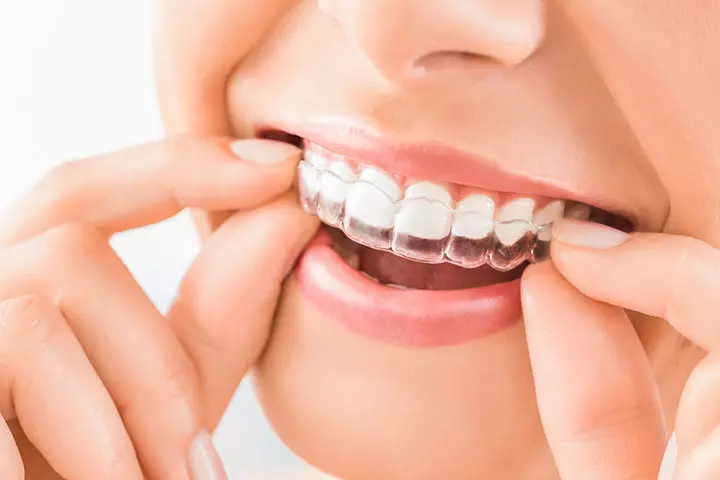
Image: Shutterstock
- Clear aligners are removable orthodontic appliances.
- Available as a series of clear and removable aligners that help move the teeth according to the need.
- Hard to notice and are aesthetically pleasing.
- Removable for two to four hours a day for eating, brushing, etc.
- Useful for children as young as 11 years, provided all their deciduous teeth have fallen off.
- May not work as expected if children do not wear them for the recommended duration, and parental attention is essential.
- Have to be removed each time before eating or drinking anything except water. Failure to do this may stain the teeth and the aligners, leading to food impaction and resulting decay.
5. Damon braces
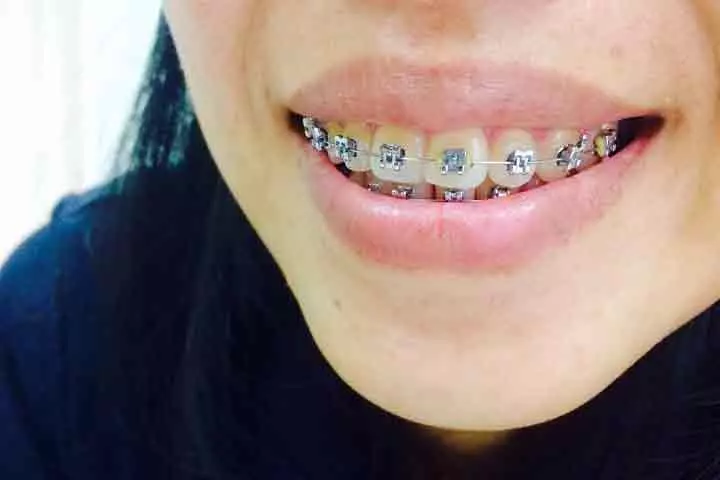
Image: Shutterstock
- Damon braces are different from traditional braces. They are self-adjusting and don’t need rubber rings.
- Dr. Dwight Damon developed these braces at Damon Orthodontics in Spokane, WA.
- You put them on each tooth just like regular braces. But Damon braces have a patented slide mechanism that hooks a thin wire to the brackets.
- This allows the braces to move along with the teeth as they align. This means less need for hands-on adjustments.
- The Damon System operates without the pressure associated with traditional braces. It uses a smooth, low-friction method and shape-memory wires to gently guide teeth to their right spot.
6. At-home clear aligners

Image: Shutterstock
- Work on the same principles as clear aligners.
- Frequent dental visits are not needed.
- Several cheap and fake options are available online that are ineffective and must be avoided.
- Suitable for minor corrections and may not be effective for severely crooked or misaligned teeth.
- Should not be used unless advised by a dental health professional.
Why Do Kids Need Braces?
The following signs may indicate the child’s need for braces (3) (5).
- Losing deciduous teeth too late or too early
- Misaligned, crowded, or crooked teeth
- New teeth erupting in the wrong position
- Missing teeth
- Having extra teeth
- Teeth that are not in contact with each other (open bite) (6)
- Upper teeth protrude more forward than the lower teeth (overbite)
- Lower teeth protrude more forward than the upper teeth (underbite) (7)
- Difficulty in eating or biting
- May often experience accidental cheek biting during chewing
- Thumb sucking or using a pacifier beyond age six
- Incorrect jaw position
- A disorder of the temporomandibular joint
- Facing issues with self-esteem or self-confidence due to uneven teeth
Braysel used to lack self-esteem and confidence due to her teeth. She recalls, “I had a very crooked set of teeth with a protruding bunny-like front tooth, and on top of that; according to my dentist – an overcrowding amount of teeth for the small mouth I have. I was always very envious of others who had really nice teeth and they could smile confidently whenever they wanted. I was in fact, pretty mindful of how I looked with my crooked teeth when I was still in primary and secondary school. Because of this exact reason, I hated smiling with my teeth in photos, and I really disliked it when others watched me eat or tried to feed me some food (i).” She finally started to adore her smile after having braces for approximately two years.
How Do Braces Work For Kids?
Braces apply constant pressure on teeth over a prolonged period, and this pressure gradually rotates and moves the teeth. As the teeth move to their new positions, the bony socket of each tooth will form new fibers that attach the tooth to the bone, holding the tooth firmly in the new position (8).
What Is A Good Age For The Child To Get Braces?
According to the American Dental Association, orthodontic treatment often begins between eight and 14 years. Therefore, beginning the treatment while the child is still growing could give optimal results. However, adults can also go for dental braces, but it might take longer to get the same results (9).
The American Association of Orthodontists advises all children to undergo an orthodontic evaluation at around seven years. This is because, at around seven years, children have a mix of deciduous and permanent teeth. The dentist will suggest whether your child needs the treatment and the expected outcome (10).
 Experts says
Experts saysHow Long Should A Child Wear Braces?
The duration of orthodontic adjustments depends on various factors such as (8)
- The severity of the problem
- Amount of space available in the jaws
- The distance a tooth needs to move
- The overall health of the teeth, gums, and supporting bone
- How well the child follows instructions
On average, once the braces are put on, they are usually in place for about one to three years.
What Happens If An Incorrect Bite Is Left Untreated?
An untreated incorrect bite may result in the following oral health problems (9).
- Decayed teeth
- Gum diseases
- Premature loss of teeth
- Altered speech
- Problems with chewing
- Abnormal wear to the tooth enamel
- Jaw problems
What To Feed A Child With Braces?
Food low in sugar content and that does not require excessive biting or chewing is preferable for children wearing braces.
Such foods may include (11).
- Complex carbohydrates include bread, mashed potatoes, pasta, pancakes, and rice.
- Healthy and soft foods such as stews or soups
- Dairy items such as smoothies, cheese, and yogurt.
- Soft or cut/grated bite-sized fruits and vegetables
- Protein-rich foods such as meat, poultry, and fish.
The following foods are to be avoided with braces (11).
- Chewy foods (such as licorice and lollies)
- Crunchy foods (such as popcorn and chips)
- Sticky food (such as snickers, bubble gum, and caramel)
- Hard foods (such as pretzels and nuts)
- Foods that need forceful biting (such as raw carrots, corn on the cob, and whole apples)
- Excessively sugary foods (such as sweets)
- Sweet juices or drinks (such as energy drinks, soft drinks, and cordial)
How To Care For Braces And Teeth?
The following tips may help eliminate or reduce oral health problems in children with braces (12) (13).
- Brushing teeth well after every meal with an orthodontic toothbrush and fluoridated toothpaste, as food gets lodged in the braces easily and requires cleaning.
- Everyday flossing between the teeth and the braces.
- Getting professional teeth cleaning every six months or at a frequency the treating orthodontist recommends.
- Limiting the child’s sugar and starch intake can help reduce decay or plaque formation.
- Using a child-friendly mouthwash.
Frequently Asked Questions
1. Are braces painful?
The child may experience some pain when the braces are first placed and whenever the dentist adjusts the braces. The doctor may recommend some OTC painkillers such as ibuprofen (Advil, Motrin), or acetaminophen (Tylenol). The pain usually subsides in a day or two after fixing the braces (8).
2. What are retainers?
A retainer is a custom-made, removable appliance that helps the teeth stay in a new position until the surrounding bone, gums, and muscles adapt to the change. Retainers are also used for some minor corrections. They can be worn at all times for the first six months and only during sleep for the next few months. However, the duration for wearing retainers varies among individuals (8).
3. Will braces change my child’s face?
In some cases, correction of crooked teeth, gaps in teeth, malocclusions such as overbite, underbite, crossbites, and other misalignment issues may also enhance facial symmetry and appearance (14). However, if the facial asymmetry is caused due to issues other than those due to teeth, some other dental appliances or surgical intervention might be needed.
4. Can kids get Invisalign?
Yes, kids can get Invisalign to correct their dental problems. However, ensure that children do not misplace their aligners and wear them religiously as per the orthodontist’s advice for best results (15).
Braces are common in children who need teeth alignment. You must get your child screened at around seven years and get a tentative orthodontic adjustment plan from the dentist. If your child wears braces, ensure proper oral hygiene maintenance and regular dental checkups to avoid problems, such as bad breath in kids. It is important to attend all dental appointments as the dentist will tighten the braces to get the desired tooth movement.
Infographic: Reasons Why A Child May Need Braces
Having braces is common and effective in treating several orthodontic conditions in children. However, if proper care is not taken, it may lead to bad breath in children with braces. The following infographic includes information on common reasons for requiring braces for children and caring tips for braces.

Illustration: Momjunction Design Team
Illustration: What Age Do Kids Get Braces? Types Food And Dental Care

Image: Stable Diffusion/MomJunction Design Team
Wondering when and why should you take your child to an orthodontist for braces? Learn when the best age is, and how to make the most of your orthodontic treatment.
Personal Experience: Source
MomJunction articles include first-hand experiences to provide you with better insights through real-life narratives. Here are the sources of personal accounts referenced in this article.
i. My experience with braces | I could finally smile.https://braysel.blogspot.com/2015/07/my-experience-with-braces-i-could.html
References
- Braces and orthodontics.
https://www.nhs.uk/conditions/braces-and-orthodontics/ - Treatment & Brace Types.
https://bos.org.uk/patients/treatments/orthodontics-for-adults/treatment-brace-types/ - Braces for Kids: Does Your Child Need Them? Styles, Costs and More.
https://www.dentaly.org/us/braces-for-kids/ - Damon Braces.
http://ww25.damonbraces.org.uk/?subid1=20250208-0412-026e-9070-87c580fc11ee - Orthodontics/Braces for Children.
https://www.stanfordchildrens.org/en/topic/default?id=orthodonticsbraces-for-children-90-P01845 - Overbite.
https://my.clevelandclinic.org/health/diseases/21473-overbite - Malocclusion of teeth.
https://medlineplus.gov/ency/article/001058.htm - Braces & Retainers
https://my.clevelandclinic.org/health/treatments/10899-teeth-retainer - Braces.
https://www.mouthhealthy.org/all-topics-a-z/braces/ - Importance of orthodontics.
https://aaoinfo.org/resources/why-orthodontics/ - Foods you can and can’t eat with braces.
https://orthodonticsaustralia.org.au/safe-foods-braces/ - Orthodontics and braces.
https://childrenswi.org/medical-care/dental-care/dental-procedures/orthodontics-and-braces - Orthodontic treatment.
https://www.dentalhealth.org/orthodontic-treatment - Braces and facial shape
https://orthodonticsaustralia.org.au/braces-facial-shape/ - The Invisalign® difference
https://www.invisalign.in/ - Braces: Your Guide to a Perfect Smile
https://aaoinfo.org/treatments/braces/ - Orthodontics for Children: Developing a Healthy Smile
https://aaoinfo.org/child-orthodontics/
Community Experiences
Join the conversation and become a part of our nurturing community! Share your stories, experiences, and insights to connect with fellow parents.
Read full bio of Dr. Ashveeta Shetty
Read full bio of Dr. Ritika Shah
Read full bio of Rebecca Malachi
Read full bio of Vidya Tadapatri










